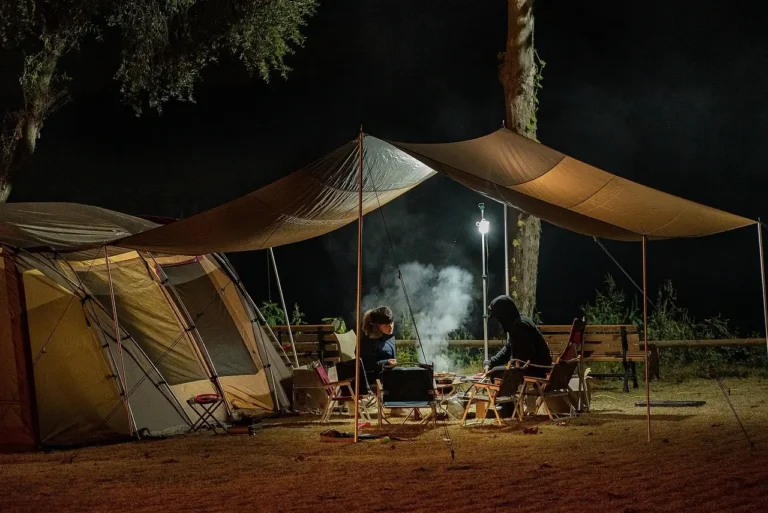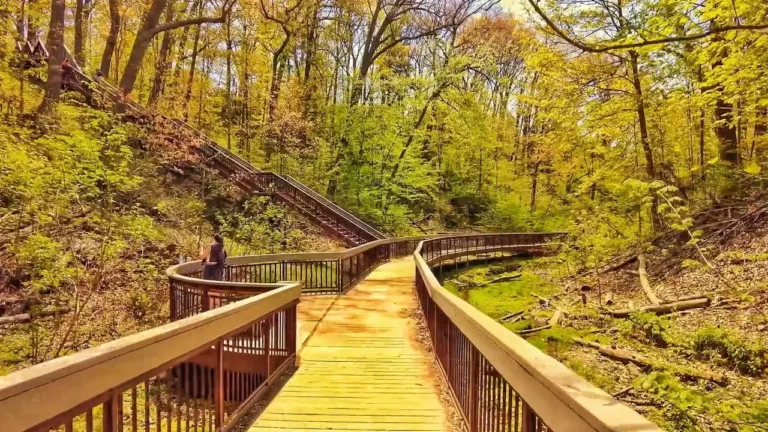FAQs: What Does Pitching a Tent Mean? (Answered)
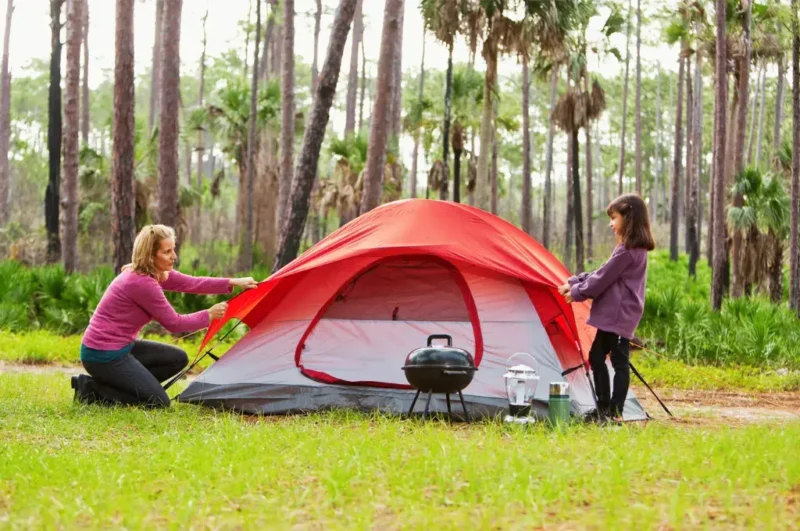
Camping is one of the most popular outdoor activities that people of all ages can enjoy. It’s a great way to disconnect from the fast-paced world and connect with nature.
While pitching a tent is one of the essential skills for any camper, in this article, we will explore what pitching a tent means, how to pitch a tent, different types of tents, camping tips for beginners, and some common unpopular mistakes you should avoid.
Let’s get started.
What Does Pitching a Tent Mean?

Pitching a tent means setting up a temporary shelter made of fabric, usually canvas or nylon, to protect oneself from the elements while camping or backpacking.
Pitching a tent involves setting up poles, securing guy lines, and fastening the tent fabric to create a wonderful structure.
Campers do this to create a cozy and secure shelter for sleeping, cooking, and storing gear while enjoying the great outdoors (that’s camping).
Different Types of Tents for Campers
There are different types of tents available, each with its unique features. Here are some of the most common types of tents you can find among campers:
#1. Dome Tents
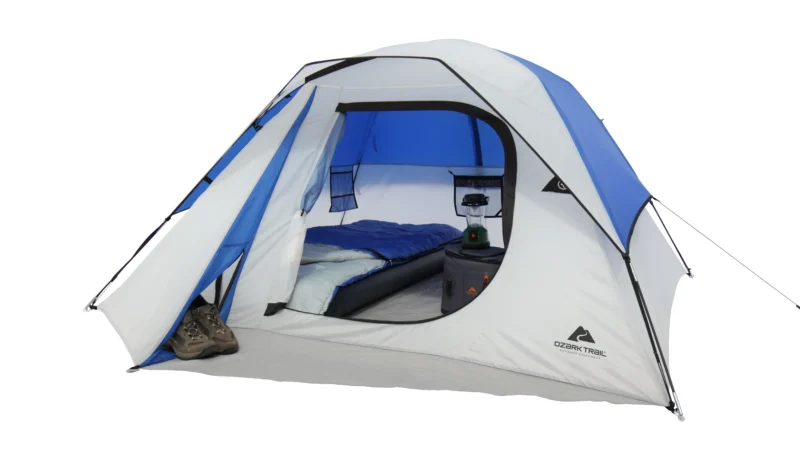
- Occupancy – 6 Person
- Design – Camping Tent
- Material – Blend
- Recommended Uses For Product – Camping & Hiking
- Product Dimensions – 120″L x 68″W x 108″H
Dome tents are popular among campers because of their lightweight, easy-to-set-up design. These tents are usually freestanding, meaning they do not require stakes to stand up; they do it by themselves.
Usually, a series of poles connect two pieces of fabric to form a dome tent. The poles are inserted into sleeves in the fabric, and the tent is staked down to the ground. Dome tents are typically very easy to set up, even for beginners.
Dome tents are also typically quite spacious. This is because the domed shape allows for more headroom and floor space. Dome tents are a good choice for families or groups of friends.
Dome tents are also typically very durable. They are made of strong materials that can withstand various weather conditions. Dome tents are excellent for camping in areas with high winds or rain.
Here are some of the benefits of dome tents:
A dome tent is an excellent option if you are looking for a comfortable and easy-to-use tent for your next camping trip.
Here are some of the drawbacks of dome tents:
Overall, dome tents are a good choice for campers looking for a comfortable, easy-to-use tent that is durable and can withstand various weather conditions.
#2. Cabin Tents
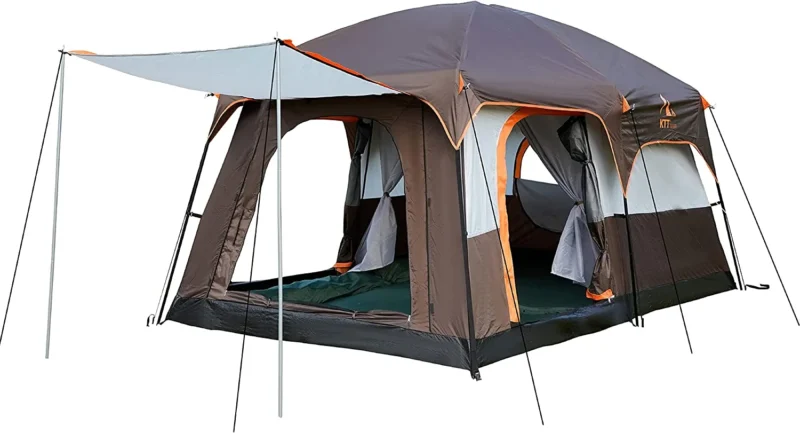
- Special Feature – Waterproof, Pop Up, Rainfly
- Brand – KTT
- Occupancy – 6 Person
- Design – Camping Tent
- Material – Polyester
- Recommended Uses For Product – Travelling, Party, Picnic, Camping & Hiking, Fishing
- Product Dimensions – 22″L x 9″W x 9″H
- Seasons – 3 Season, Summer, Spring
- Color – Brown
- Item Weight – 21.5 Pounds
Secondly, we have the Cabin tent. These types of tents are larger and more spacious than dome tents. They are designed to provide ample headroom and interior space, making them a popular choice for families or groups of campers.
Cabin tents usually have straighter walls than dome tents, which means that they offer more vertical space. They’re also typically quick and easy to set up.
Cabin tents are an excellent choice for families or groups of friends who want a comfortable and spacious place to stay while camping. They are also a good choice for car camping, as they are relatively easy to transport.
Here are some of the benefits of cabin tents:
Here are some of the drawbacks of cabin tents:
Overall, cabin tents are a good choice for campers looking for a comfortable, spacious, and easy-to-use tent that can withstand various weather conditions.
#3. Backpacking Tents
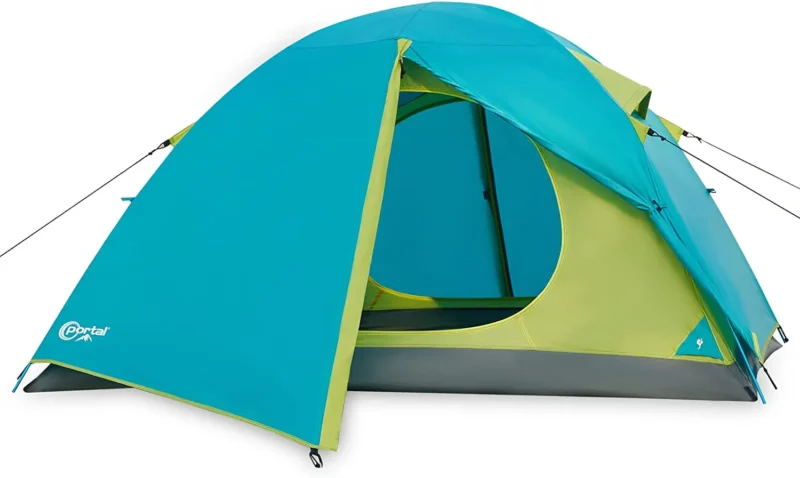
- Special Feature – Windproof, Ultralight, Waterproof, Lightweight, Rainfly
- Brand – PORTAL
- Occupancy – 3 Person
- Design – Camping Tent
- Material – taffeta, Aluminum, fabric, Polyurethane
- Recommended Uses For Product – Camping & Hiking
- Product Dimensions – 16.9″L x 7″W x 7″H
- Seasons – 4 Season
- Color – 3 Person-Blue
- Sport Type – Camping & Hiking
Backpacking tents are also lightweight and compact, just like Dorm tents. They are mostly designed for hikers and backpackers who must carry their shelter.
These tents are usually smaller than regular camping tents and are made with lightweight materials to reduce weight. They are easy to set up and pack down quickly.
Key features of backpacking tents include:
When choosing a backpacking tent, factors like weight, size, durability, weather resistance, and the number of occupants should be considered based on your specific needs and the nature of your backpacking adventures.
How to Pitch a Tent as a Beginner
When it comes to pitching a tent, trust me, it can be a daunting task, especially for beginners. But that should stop you from having an excellent time camping.
Hence, here are the basic steps to pitch a tent after getting one.
You may also like to check out Unveiling Your US Adventure: Essential Guide for International Travelers Planning a Trip.
Camping Tips for Beginners
Here are some tips for you as a beginner in the camping world.
Common Mistakes You Should Make When Camping as a Beginner
Most beginner campers make mistakes that should be avoided, which turns into their worst day.
So, to avoid making such types of mistakes, here are some common mistakes you should avoid when camping as a beginner.
#1. Not checking the weather forecast
Weather can change quickly outdoors, so checking the weather forecast before camping is essential.
Bring appropriate gear such as rain jackets, tarps, and extra tent stakes if there’s a chance of rain or thunderstorms. Preparing for different weather conditions helps ensure your camping trip succeeds.
#2. Forgetting to bring the necessary gear
Forgetting to bring important gear can be a frustrating mistake to make. Some common gear that campers need to remember to bring includes flashlights, extra batteries, first aid kits, and maps.
Make a checklist of all the gear you’ll need for your camping trip, and double-check it before you leave. This can help ensure you have everything for a safe and enjoyable camping trip.
#3. Setting up your tent in an unsafe location
Choosing the right location for your tent is important for your safety and comfort. Avoid setting up your tent near dead trees, unstable rock formations, or bodies of water that may flood.
Look for a flat and dry spot that is protected from the wind. If you’d not choose the right location, it might disrupt your camping.
#4. Not properly securing your food from wildlife
Wildlife such as bears, raccoons, and squirrels can be attracted to food smells and can cause damage to your campsite.
Store wildlife in a bear-resistant container or hang it from a tree at least 10 feet off the ground to prevent wildlife from getting into your food. Don’t leave food or trash out in the open, and clean up any spills or food scraps.
#5. Overpacking
It’s tempting to bring everything you might need on your camping trip, but overpacking can be a mistake.
Heavy backpacks can be uncomfortable to carry, and too much gear can make it difficult to set up camp. Be mindful of what you’ll need for your camping trip, and leave unnecessary items at home.
#6. Not respecting quiet hours
And lastly, Quiet hours are typically from 10 PM to 7 AM in most campgrounds. Respect quiet hours by keeping noise levels down, not playing loud music, and using headphones if you need to listen to music or watch a movie. Be mindful of your neighbors and try to keep noise levels minimal.
Before You Go…
Pitching a tent is one of the most important things you must first learn as a person trying camp for the first time. You don’t have to wait until you reach the camping ground before pitching your tent if you have no one around.
You can start by learning it at home, and when you get good at home, you can move on to the camping space.
So, while camping can be fun and memorable with friends and families, always ensure you avoid the common mistakes beginner campers make and follow up with the tips outlined in this article.

